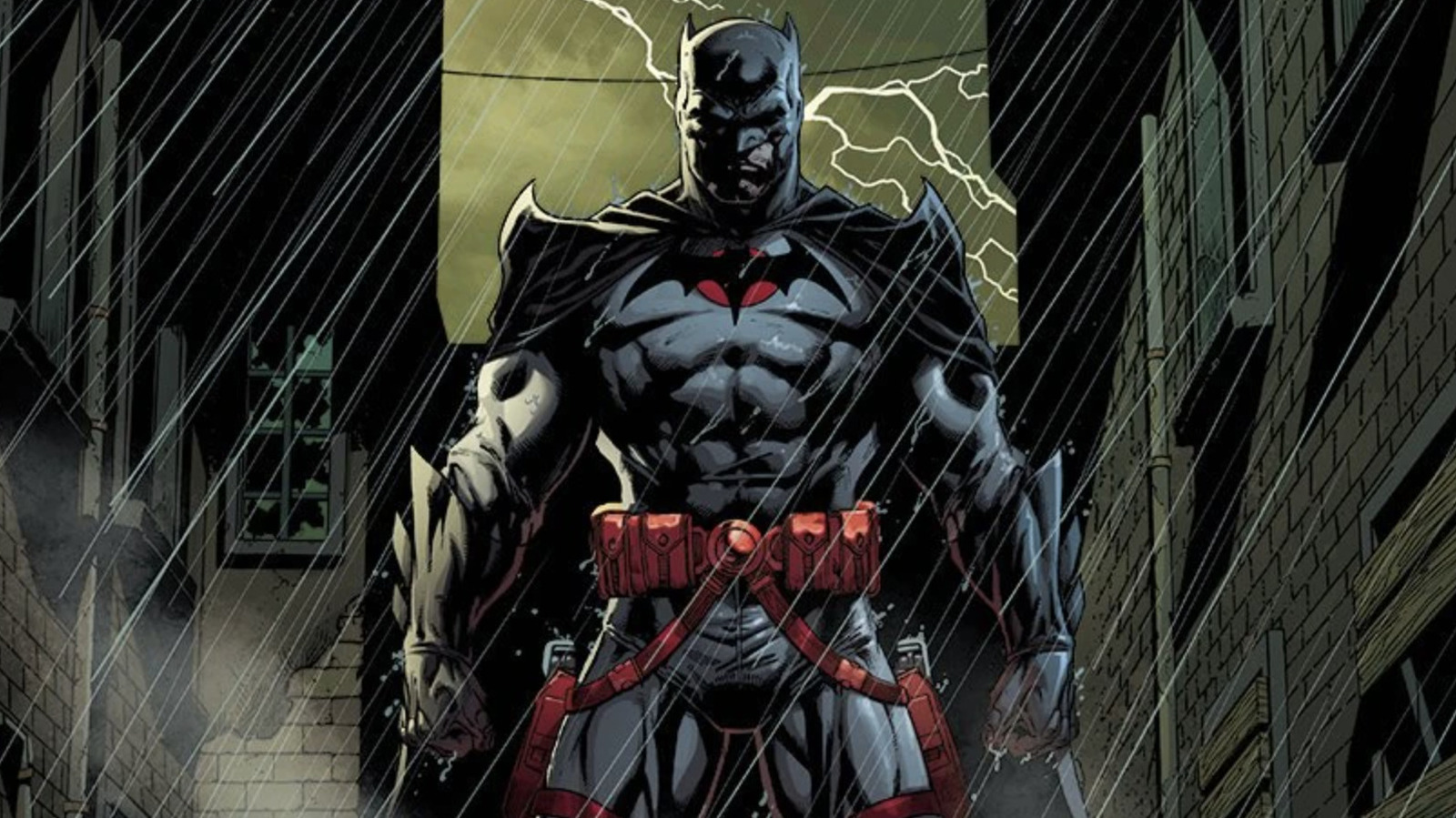In “Flashpoint,” Barry Allen/The Flash goes back in time to stop the murder of his mother, Nora. It changes the entire world… for the worse. Deprived of his super-speed, Barry can’t run back and undo what was already undone either. Thomas Wayne then becomes Barry’s main ally in resetting the timeline, as he’s got nothing to live for. (Martha? She had a mental breakdown from Bruce’s death and became the “Flashpoint” Joker!) Thomas would much rather erase his own future to save his son’s.
Advertisement
The “Flash” movie, too, features Barry (Ezra Miller) teaming up with an alternate Batman. Rather than bring in Morgan as Thomas Wayne/Batman, though, “The Flash” brought back Michael Keaton as Bruce Wayne in a (failed nostalgia) gambit. There are similar changes to the “Flashpoint” story made throughout the film.
In both the comic and movie, Superman doesn’t exist in the “Flashpoint” timeline. In the comic, Kal-El landed in Metropolis and has spent his life as a prisoner of the U.S. government. In the movie, Kal-El died as an infant and Kara Zor-El/Supergirl (Sasha Calle) is being held in a Russian prison. (The good ol’ USA would never detain immigrants, no siree.)
In “Flashpoint,” Wonder Woman’s Amazons and Aquaman’s Atlanteans are waging a war that could destroy human civilization. The movie changes this threat to General Zod (Michael Shannon) and his Kryptonian invaders from Snyder’s “Man of Steel.” (Hey, “Snow White” has proved that an evil queen is outside Gal Gadot’s acting range!)
Advertisement
But should DC fans mourn not getting a more faithful “Flashpoint” movie (excepting the animated movie, “The Flashpoint Paradox”)? The comic is what I’d call a manufactured classic: Because it’s important, newbie comic fans assume it must also be good.
In reality, “Flashpoint” is a pretty hollow and cynical story. It was used as a vehicle for DC’s “New 52” reboot, which aimed to reset the DC universe to be more friendly to new readers… and to movie adaptations. That’s why you had the “New 52” change Wonder Woman into Zeus’ daughter, giving her an origin story more palatable for general audiences.
“Flashpoint” is a harbinger of the changes that Geoff Johns would make while spearheading the “New 52.” Turning Wonder Woman and Aquaman into genocidal barbarians during “Flashpoint”? It feels symptomatic of his fears about the two of them being perceived as “uncool,” hence, he rewrote them as violent warriors when he took over writing “Justice League” after “Flashpoint.”
The story’s central message — that it’s better to keep things the way they are — is also utterly antithetical to the imagination of superheroes. Johns can imagine a world where a man runs faster than the speed of light, but not one where you use that power to change the world? Frankly, Thomas Wayne as Batman shows a similar lack of creativity. It’s a nifty elevator pitch, which is why “Flashpoint” Batman took off with fans and kept returning after “Flashpoint” was long over. But he’s basically just the Punisher in a meaner-than-usual batsuit.
Advertisement
The “New 52” wound up being a mess, mostly because it couldn’t commit to being a reboot, and DC had to softly undo it five years later with “DC Rebirth.” Like comics, like films. The best thing “Flashpoint” could have done — letting Morgan play Batman — never even happened.
Jeffrey Dean Morgan has addressed whether Zack Snyder was really setting the stage for him to play Flashpoint Batman in the DC Extended Universe. Read More

